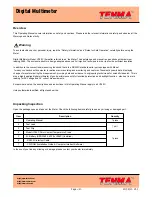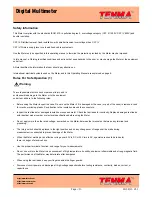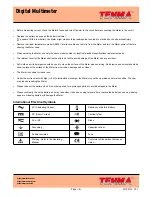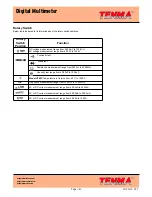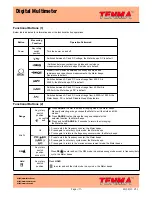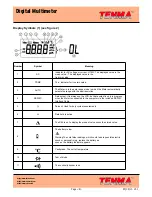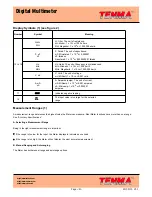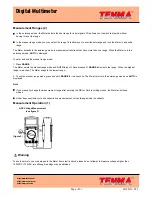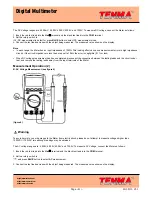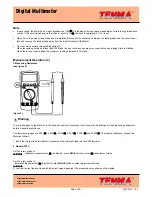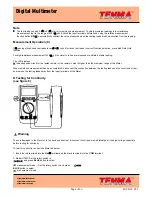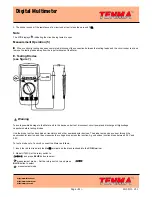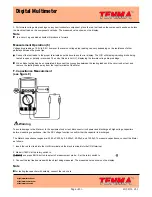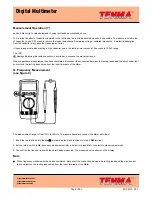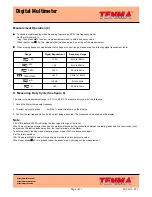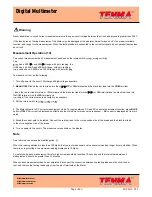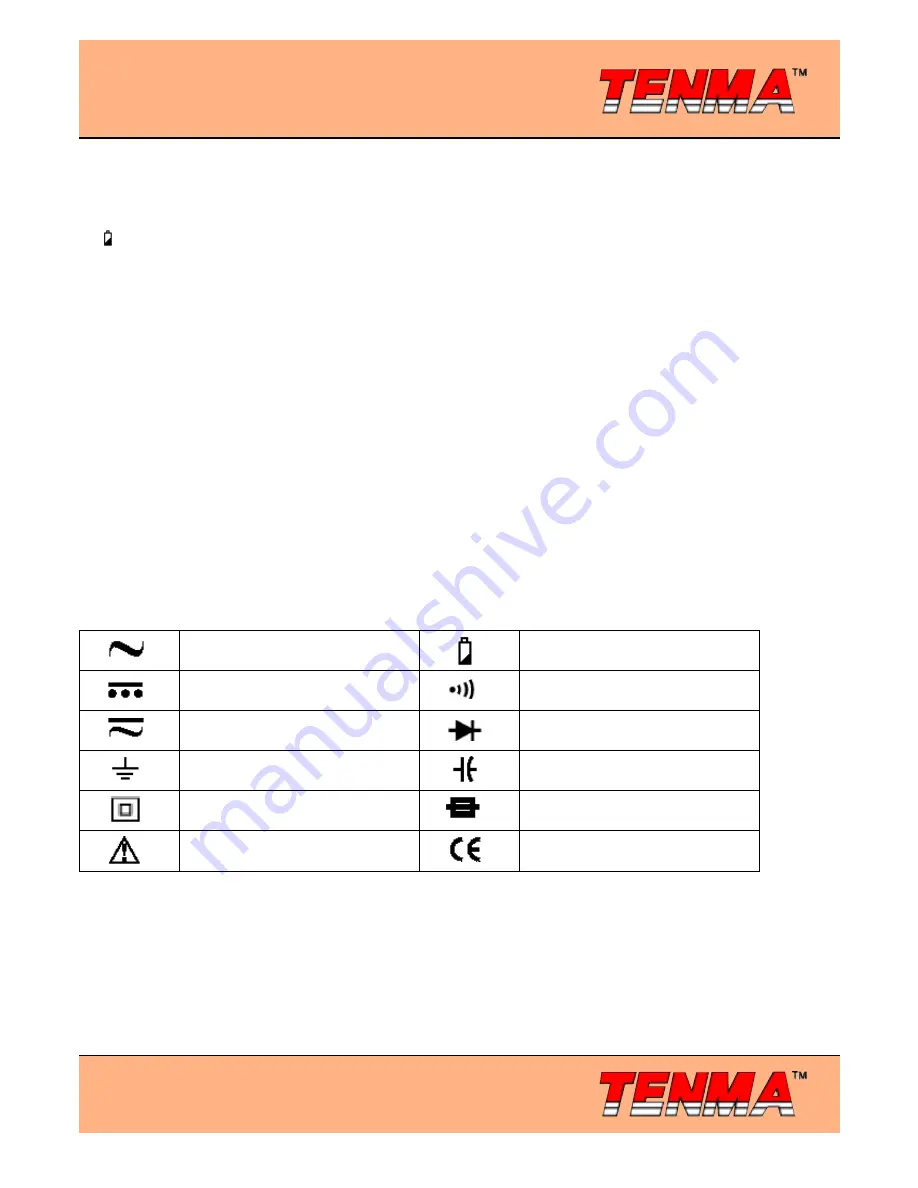
Digital Multimeter
Page <4>
20/09/10 V1.1
http://www.farnell.com
http://www.newark.com
http://www.cpc.co.uk
•
Before measuring current, check the Meter’s fuses and turn off power to the circuit before connecting the Meter to the circuit.
•
Replace the battery as soon as the battery indicator ”
“ appears. With a low battery, the Meter might produce false readings that can lead to electric shock and personal injury.
•
Remove test lead, temperature probe, RS232C interface cable and test clip from the Meter and turn the Meter power off before
opening the Meter case.
•
When servicing the Meter, use only the same model number or identical electrical specifications replacement parts.
•
The internal circuit of the Meter shall not be altered at will to avoid damage of the Meter and any accident.
•
Soft cloth and mild detergent should be used to clean the surface of the Meter when servicing. No abrasive and solvent should be
used to prevent the surface of the Meter from corrosion, damage and accident.
•
The Meter is suitable for indoor use.
•
Under the environment with high (+/-4kV) electrostatic discharge, the Meter may not be operated as normal condition. The user
may require resetting the Meter.
•
Please take out the battery when it is not being used for a prolonged period to avoid damages to the Meter.
•
Please constantly check the battery as it may leak when it has been using for some time, replace the battery as soon as leaking
appears. A leaking battery will damage the Meter.
International Electrical Symbols
AC (Alternating Current)
Deficiency of Built-In Battery
DC (Direct Current)
Continuity Test
AC or DC
Diode
Grounding
Capacitance Test
Double Insulated
Fuse
Warning, Refer to the Operating
Manual
Conforms to Standards of European
Union


